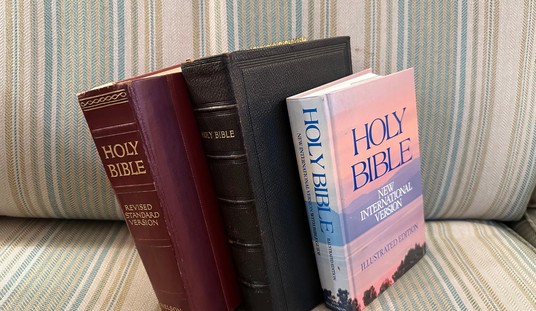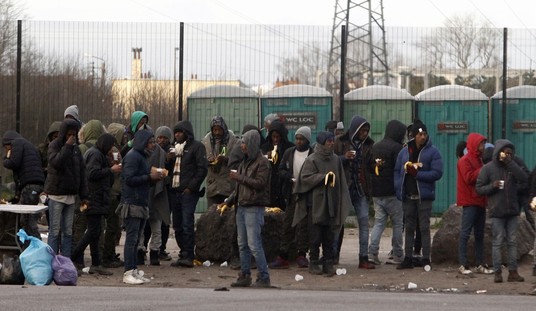Something light from Jeffrey Goldberg and Marc Ambinder to start the weekend on an upbeat note.
One method the SPD uses to ensure the safety of its nuclear weapons is to move them among the 15 or more facilities that handle them. Nuclear weapons must go to the shop for occasional maintenance, and so they must be moved to suitably equipped facilities, but Pakistan is also said to move them about the country in an attempt to keep American and Indian intelligence agencies guessing about their locations.
Nuclear-weapons components are sometimes moved by helicopter and sometimes moved over roads. And instead of moving nuclear material in armored, well-defended convoys, the SPD prefers to move material by subterfuge, in civilian-style vehicles without noticeable defenses, in the regular flow of traffic. According to both Pakistani and American sources, vans with a modest security profile are sometimes the preferred conveyance. And according to a senior U.S. intelligence official, the Pakistanis have begun using this low-security method to transfer not merely the “de-mated” component nuclear parts but “mated” nuclear weapons. Western nuclear experts have feared that Pakistan is building small, “tactical” nuclear weapons for quick deployment on the battlefield. In fact, not only is Pakistan building these devices, it is also now moving them over roads.
What this means, in essence, is this: In a country that is home to the harshest variants of Muslim fundamentalism, and to the headquarters of the organizations that espouse these extremist ideologies, including al-Qaeda, the Haqqani network, and Lashkar-e-Taiba (which conducted the devastating terror attacks on Mumbai three years ago that killed nearly 200 civilians), nuclear bombs capable of destroying entire cities are transported in delivery vans on congested and dangerous roads. And Pakistani and American sources say that since the raid on Abbottabad, the Pakistanis have provoked anxiety inside the Pentagon by increasing the pace of these movements. In other words, the Pakistani government is willing to make its nuclear weapons more vulnerable to theft by jihadists simply to hide them from the United States, the country that funds much of its military budget.
That’s the tastiest morsel from a long, horrifying piece chronicling 20 years of Pakistani paranoia, treachery, and jihadism. The big takeaways aren’t surprising: It isn’t “rogue” elements of ISI that support terrorism, it’s the whole establishment; our “alliance” is a complete fraud held together by mutual fear of what would happen if it collapsed; as Pakistani society slowly crumbles, their nuclear deterrent becomes more important to them as a matter of national pride and as a sword/shield against India, etc. If you follow news about Pakistan, you learned those lessons long ago and re-learn them every week. Case in point: If you missed it last month, enjoy this NYT report on rockets being fired at U.S. troops in Afghanistan from across the border in Pakistan over the past six months — coincidentally, ever since the Bin Laden raid that embarrassed our “ally” so much. Ten days later after it was published, a U.S. general accused Pakistani foot soldiers in the area of either looking the other way at jihadis firing the rockets or outright collaborating with them in the attacks. If that story’s not to your taste, try this one from a few days ago about leaders of the Haqqani network — the single most dangerous jihadist outfit in Afghanistan — moving freely about Pakistan with ISI’s blessing, even to the point of visiting military facilities in Rawalpindi. (And yet they’d have you believe they didn’t know where Bin Laden was.) Pakistani hostility isn’t an open secret anymore; it’s simply not secret at all in any meaningful sense.
Why read the Goldberg/Ambinder piece, then, when you already know all this stuff? Well, for details like this. What happens if there’s a coup or the army fractures and suddenly Pakistan’s nuclear arsenal is in play? Quote:
JSOC [U.S. Special Operations Command] would take the lead, however, accompanied by civilian experts, and has been training for such an operation for years. JSOC forces are trained to breach the inner perimeters of nuclear installations, and then to find, secure, evacuate—or, if that’s not possible, to “render safe”—any live weapons. At the Nevada National Security Site, northwest of Las Vegas, Delta Force and SEAL Team Six squadrons practice “Deep Underground Shelter” penetrations, using extremely sensitive radiological detection devices that can pick up trace amounts of nuclear material and help Special Operations locate the precise spot where the fissile material is stored. JSOC has also built mock Pashtun villages, complete with hidden mock nuclear-storage depots, at a training facility on the East Coast, so SEALs and Delta Force operatives can practice there.
At the same time American military and intelligence forces have been training in the U.S for such a disablement campaign, they have also been quietly pre-positioning the necessary equipment in the region. In the event of a coup, U.S. forces would rush into the country, crossing borders, rappelling down from helicopters, and parachuting out of airplanes, so they could begin securing known or suspected nuclear-storage sites. According to the former senior Special Operations planner, JSOC units’ first tasks might be to disable tactical nuclear weapons—because those are more easily mated, and easier to move around, than long-range missiles.
In a larger disablement campaign, the U.S. would likely mobilize the Army’s 20th Support Command, whose Nuclear Disablement Teams would accompany Special Operations detachments or Marine companies into the country. These teams are trained to engage in what the military delicately calls “sensitive site exploitation operations on nuclear sites”—meaning that they can destroy a nuclear weapon without setting it off. Generally, a mated nuclear warhead can be deactivated when its trigger mechanism is disabled—and so both the Army teams and JSOC units train extensively on the types of trigger mechanisms that Pakistani weapons are thought to use. According to some scenarios developed by American war planners, after as many weapons as possible were disabled and as much fissile material as possible was secured, U.S. troops would evacuate quickly—because the final stage of the plan involves precision missile strikes on nuclear bunkers, using special “hard and deeply buried target” munitions.
Just one minor problem with this strategy: Pakistan knows we have standby plans to seize their arsenal if things turn desperate, which is why they’ve resorted to insane tactics like driving operational nukes around in civilian vehicles and, of course, why they’ve been ramping up production of their nuclear trump card for the past two years. They’d rather risk a catastrophic accident or the atomic version of the great train robbery by Al Qaeda than lose face by letting the U.S. know where its nukes are — which, ironically, only increases the odds of an emergency that’ll require American intervention. (The fact that this cat-and-mouse game is already being played explains why, I assume, Goldberg and Ambinder felt free to delve into detail. They’re not telling either side here anything it doesn’t already know; in fact, I wonder if U.S. intel deliberately outed Pakistan’s reckless transport of “mated” nukes to force them to take greater precautions.)
So what’s our next move in dealing with a paranoiac armed to the teeth with nuclear weapons? Why, there is no next move: Goldberg and Ambinder conclude, correctly, that the only option is to maintain the “alliance” and keep U.S. military aid flowing since that gives us marginally more leverage in averting disaster than we’d otherwise have. Imagine a lunatic wired with a bomb who’s holding a bunch of people hostage. You’ve got only two options — either shoot him or, if you can’t do that, keep talking talking talking and hope that eventually his attitude changes. That’s the only way to understand our surreal new strategy of inviting ISI to join peace talks in Afghanistan while simultaneously accusing them of sponsoring terrorists. Exit question: It seems taken as a given on our side that a nuclear Iran would be the most dangerous country in the world. But why? Pakistan is filthy with jihadists too, they’ve already got a huge stockpile of weapons, and their command and control seems much dicier than the Revolutionary Guard’s. And needless to say, if Iran’s regime crumbles, we won’t have to worry as much about what replaces it the way we do with Pakistan.








Join the conversation as a VIP Member